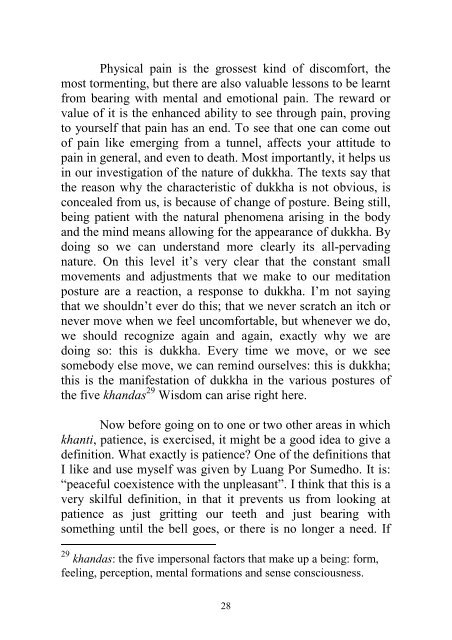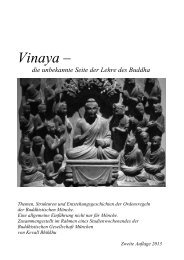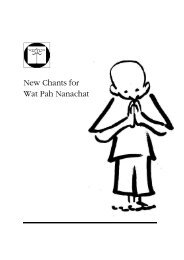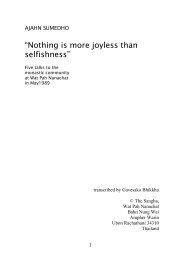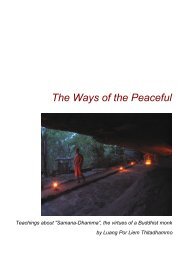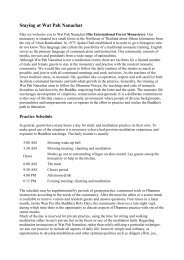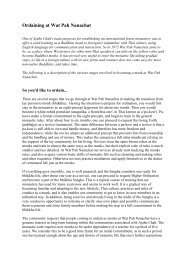Khanti - Wat Pah Nanachat
Khanti - Wat Pah Nanachat
Khanti - Wat Pah Nanachat
You also want an ePaper? Increase the reach of your titles
YUMPU automatically turns print PDFs into web optimized ePapers that Google loves.
Physical pain is the grossest kind of discomfort, the<br />
most tormenting, but there are also valuable lessons to be learnt<br />
from bearing with mental and emotional pain. The reward or<br />
value of it is the enhanced ability to see through pain, proving<br />
to yourself that pain has an end. To see that one can come out<br />
of pain like emerging from a tunnel, affects your attitude to<br />
pain in general, and even to death. Most importantly, it helps us<br />
in our investigation of the nature of dukkha. The texts say that<br />
the reason why the characteristic of dukkha is not obvious, is<br />
concealed from us, is because of change of posture. Being still,<br />
being patient with the natural phenomena arising in the body<br />
and the mind means allowing for the appearance of dukkha. By<br />
doing so we can understand more clearly its all-pervading<br />
nature. On this level it’s very clear that the constant small<br />
movements and adjustments that we make to our meditation<br />
posture are a reaction, a response to dukkha. I’m not saying<br />
that we shouldn’t ever do this; that we never scratch an itch or<br />
never move when we feel uncomfortable, but whenever we do,<br />
we should recognize again and again, exactly why we are<br />
doing so: this is dukkha. Every time we move, or we see<br />
somebody else move, we can remind ourselves: this is dukkha;<br />
this is the manifestation of dukkha in the various postures of<br />
the five khandas 29 Wisdom can arise right here.<br />
Now before going on to one or two other areas in which<br />
khanti, patience, is exercised, it might be a good idea to give a<br />
definition. What exactly is patience? One of the definitions that<br />
I like and use myself was given by Luang Por Sumedho. It is:<br />
“peaceful coexistence with the unpleasant”. I think that this is a<br />
very skilful definition, in that it prevents us from looking at<br />
patience as just gritting our teeth and just bearing with<br />
something until the bell goes, or there is no longer a need. If<br />
29 khandas: the five impersonal factors that make up a being: form,<br />
feeling, perception, mental formations and sense consciousness.<br />
28


